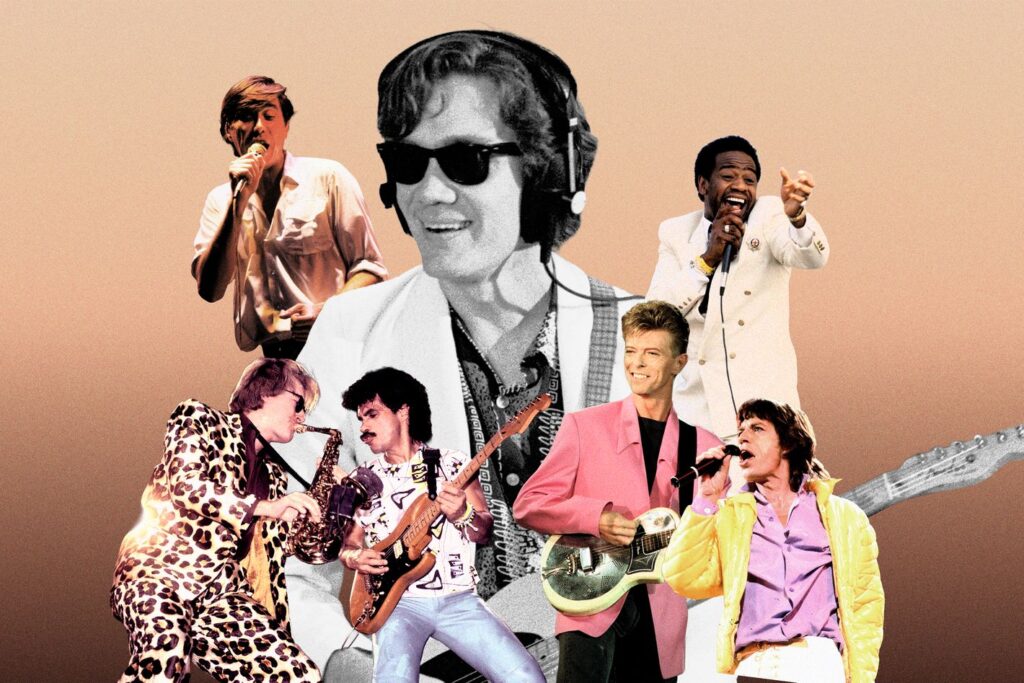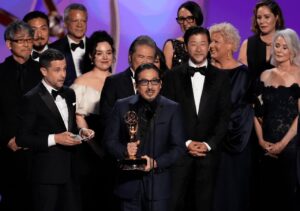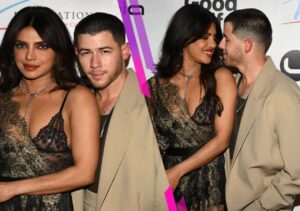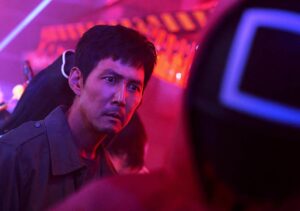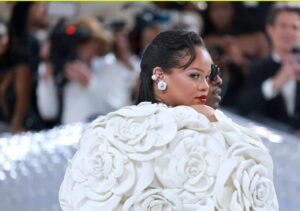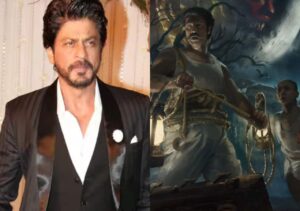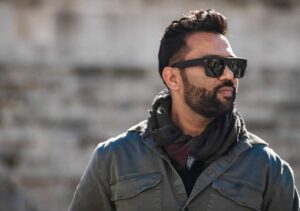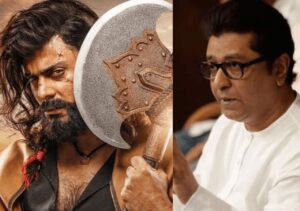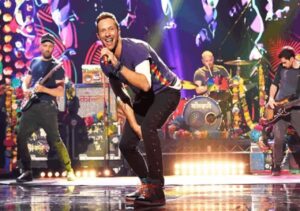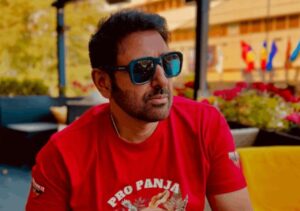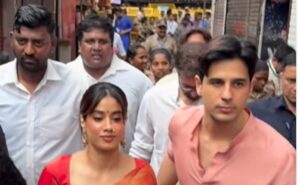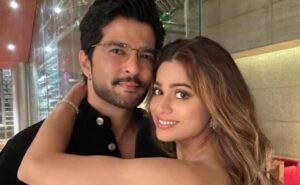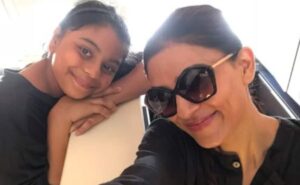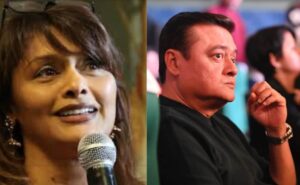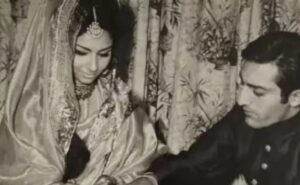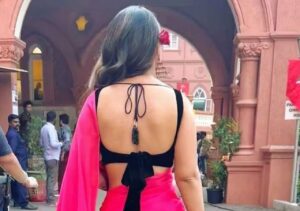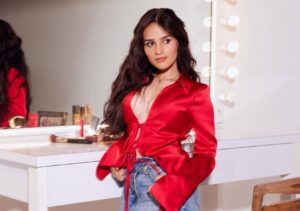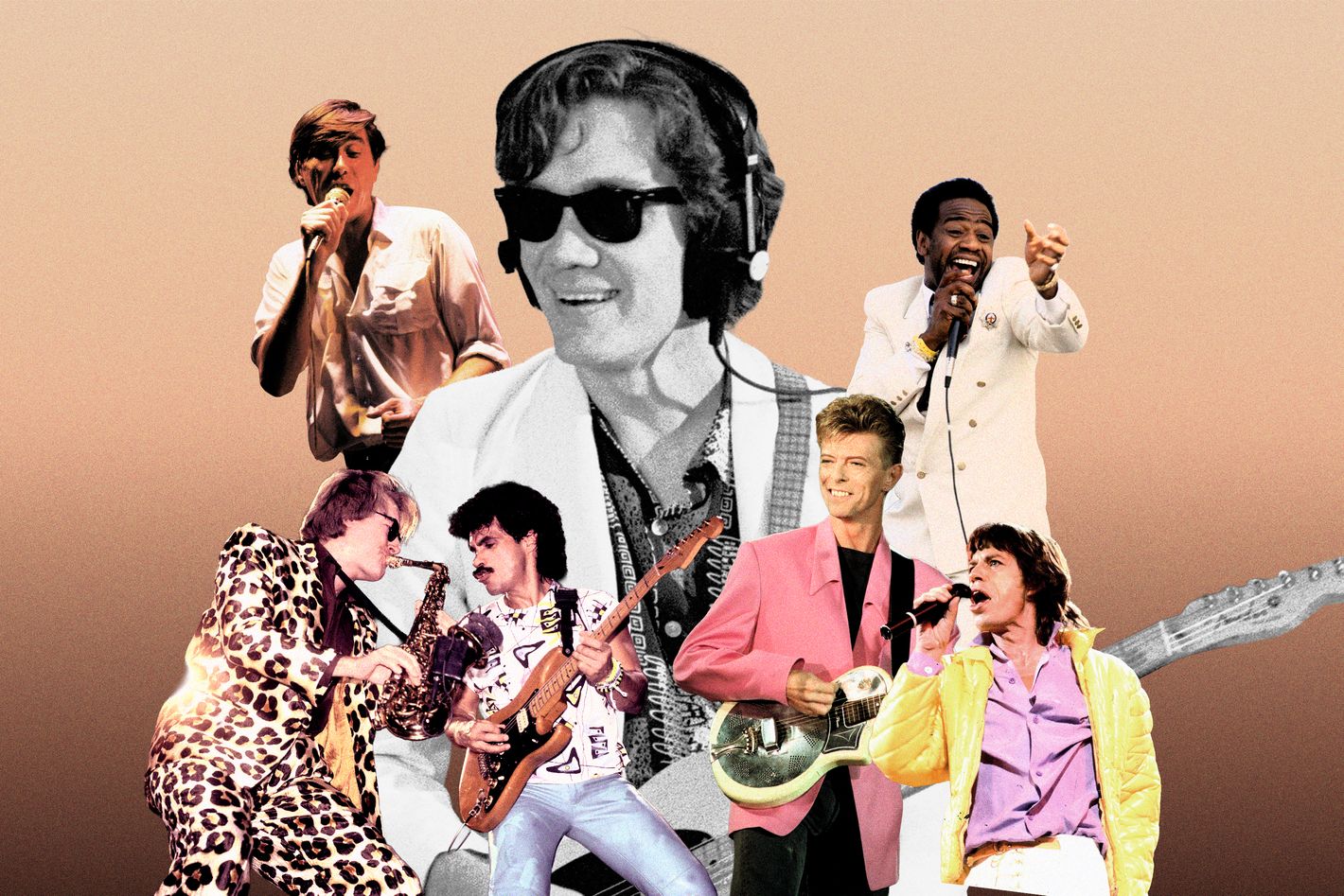
With respect to the repertory players, if you watch any Saturday Night Live episode between 1985 and 1995, it’s clear that the person with the most dazzling stage presence is G.E. Smith. The show’s bandleader — Lenny Pickett’s predecessor — presided over anything related to music during that decade, whether it meant joining musical guests as backup on guitar or treating commercial breaks as his personal shredding time. His hair? Well-coiffed. Bone structure? Chiseled. Smith was always there when a sketch ended, instrument in hand, serving as the sonic bridge between the Studio 8H absurdity and our less fun reality. “I’ve been so lucky because there’s a zillion great guitar players,” he says now. “This is the United States, it’s lousy with great guitar players. I just happened to be at the right place and the right time. I’d show up, I’d meet this guy, I’d meet this woman, and then I’d be recording something in the studio. That’s the story.”
Prior to joining SNL, Smith found gainful employment as a session musician in New York City, which led to a multiyear stint as Daryl Hall & John Oates’s lead guitarist during the duo’s most successful era. (If you can’t conjure up his intro riff to “Private Eyes,” fix that immediately.) Smith also appeared in several of the duo’s music videos, which teased his future SNL face-mugging persona. “Funny enough, I always thought I was more useful to the guys live than in the studio,” he explains. “I was good with the hooks.” Several months after appearing on the show’s 50th-anniversary concert special, Smith walked us through what he considers his best performances.
Daryl Hall & John Oates, X-Static (1979)
I came to New York around 1978. New York loves fresh meat, and I was the freshest meat, so I got lots of work. There were so many studios then in Manhattan. You would do a session for an hour and then run to another session 20 minutes later down the street. But I got a job playing for Daryl Hall & John Oates. They had a few big hits in the mid ’70s, like “Sara Smile” and “Rich Girl.” Then things slowed down for them a little bit. So they were looking to record some hits again. We’re all from Pennsylvania as it turned out. When I first went to talk with Daryl, I went over to his apartment and brought a guitar with me, but we didn’t even play. We just started talking about clothes, cars, girls, and Pennsylvania.
We got along really well and I got the job. The first thing we did was go into the studio and play around with stuff. I guess you’d call them a pop group, but Daryl and John always wanted to do good music, too. They’re all really good songs, melodically, and contain interesting chords. It was easy recording with them. At the very beginning, I was getting $200 a week — $100 to play the guitar and $100 to drive one of their station wagons while we were out on the road. We were playing in bars; we weren’t at all playing in big places. But that only lasted a few months. X-Static took off and then it got what you think of “big rock and roll” as being.
David Bowie, “Life on Mars?” on The Tonight Show Starring Johnny Carson (1980)
David Bowie had a new single at that time called “Ashes to Ashes,” so he went on The Tonight Show, which at that time was still hosted by Johnny Carson. I was hugely influenced by Mick Ronson, who was David’s primary guitarist for a long time. He was always on fire while performing live. This was huge for me because I got to perform with him and also be on Johnny friggin’ Carson. I had watched The Tonight Show with my dad for years growing up, even when it was Jack Paar before, if you really want to go back. To be in Mick Ronson’s shoes for two songs was very fulfilling.
Daryl Hall & John Oates, “Private Eyes” (1981)
The first big hit I experienced was “Private Eyes.” What a fun one. That song starts off with a little guitar line. I always listen to the singer whenever I’m working on something — I listen to the notes they’re singing very carefully and don’t play the melody the same way every time. I always went with that method while we were recording. You keep your job if it sounds good. And I kept my job! I don’t know if they always knew why my guitar sounded good to them. All of the Hall & Oates stuff was great. We toured extensively. We would tour for nine months and come back to the city, take two weeks off, and then head over to Electric Lady Studios down on 8th Street and record a new album. If there was any time left afterwards, we’d take another few weeks off and go back out on the road for nine more months. We were just going everywhere. I saw the world several times over.
Daryl Hall & John Oates, “Out of Touch” (1984)
I don’t play anything flashy on “Out of Touch,” but my rhythm guitar has this particular sound that helped make the record sound the way that it did. As Daryl and John got more popular and received more and more radio play, MTV came along and they were ready. Tommy Mottola was their manager at the time and they knew MTV was the future. So we had at least seven music videos in the can ready to go when that came on. Then, of course, there has to be a visual element. I was young and visual in those days, so I helped with that. I was an asset to them in a live setting. Guys in bands at the time tended to have really long hair, so I went to the barber and said, “Cut it like I just joined the Marines.” So here’s this lunatic with a crew cut. I was energetic onstage, jumped around a lot, and tried to always play parts that fit the songs and stood out so people might remember them.
Tom Waits, “Downtown Train” (1985)
I got a call in the middle of the summer. It was really hot in the city and I was asked to be at an air-conditioned studio the following afternoon for Tom Waits. I loved Tom and I had never met him before. So I came into the studio, and he was listening to a playback and sitting at the board with the engineer. He gave me a look and was like, “Oh yeah, you’re that guitar player guy. I got these songs and figured if we play them together, maybe they can turn out good.” I said, “That sounds good.” So we sat in the studio with our guitars and played probably 12 or 15 songs. We wouldn’t talk about it or anything. We would play whatever I thought might sound good. And finally after a few hours he said, “Okay, thanks a lot.” Boom, done.
It seemed like we had a good time, but who knows. So I go home, and that night he calls me up and says, “Hey man, can you come back tomorrow and bring a bass player and drummer?” So I came back the next day and we recorded a few more songs that included “Downtown Train.” I had a Fender Telecaster with this strange wiring thing — it’s a very unusual sound and most people don’t like it. But he loved that sound. He kept saying, “Use that.”
Mick Jagger, She’s the Boss (1985)
I was a huge Rolling Stones fan from their earliest days. The way that I got the gig is quite a story and almost embarrassing. This is back in the day of answering machines. I was living in what I call “the Middle East” in between the West Village and East Village, on this tiny little street called Centre Market Place. I was living upstairs over a gun store where the police bought their guns. Great environment. I came home one night and there’s a message on my answering machine and it says, “G.E., it’s Mick.” You know, like you had any trouble recalling what Mick it would be. And he goes, “How’d you like to come to Barbados for a couple of weeks with me and play the blues?” Um, yeah, I could do that. That’s what we did.
We went down to Blue Wave Studios, which was built by Eddy Grant in the middle of this 600-acre sugar-cane plantation. And there I was, just me and Mick, and he was running through ideas. You can imagine what that would be like for me. It was surrealistic. Then we eventually came back to New York and recorded the album. I’ve got to say, I’ve been really lucky with how I’ve worked with all of these people I was a big fan of. Mick, David Bowie, and Bob Dylan, to name a few. You hear about certain artists being cranky or cheap, but never in my experience. These people were all great to me, paid me well, and treated me as an equal.
The Saturday Night Live Band, performing with Al Green (1986)
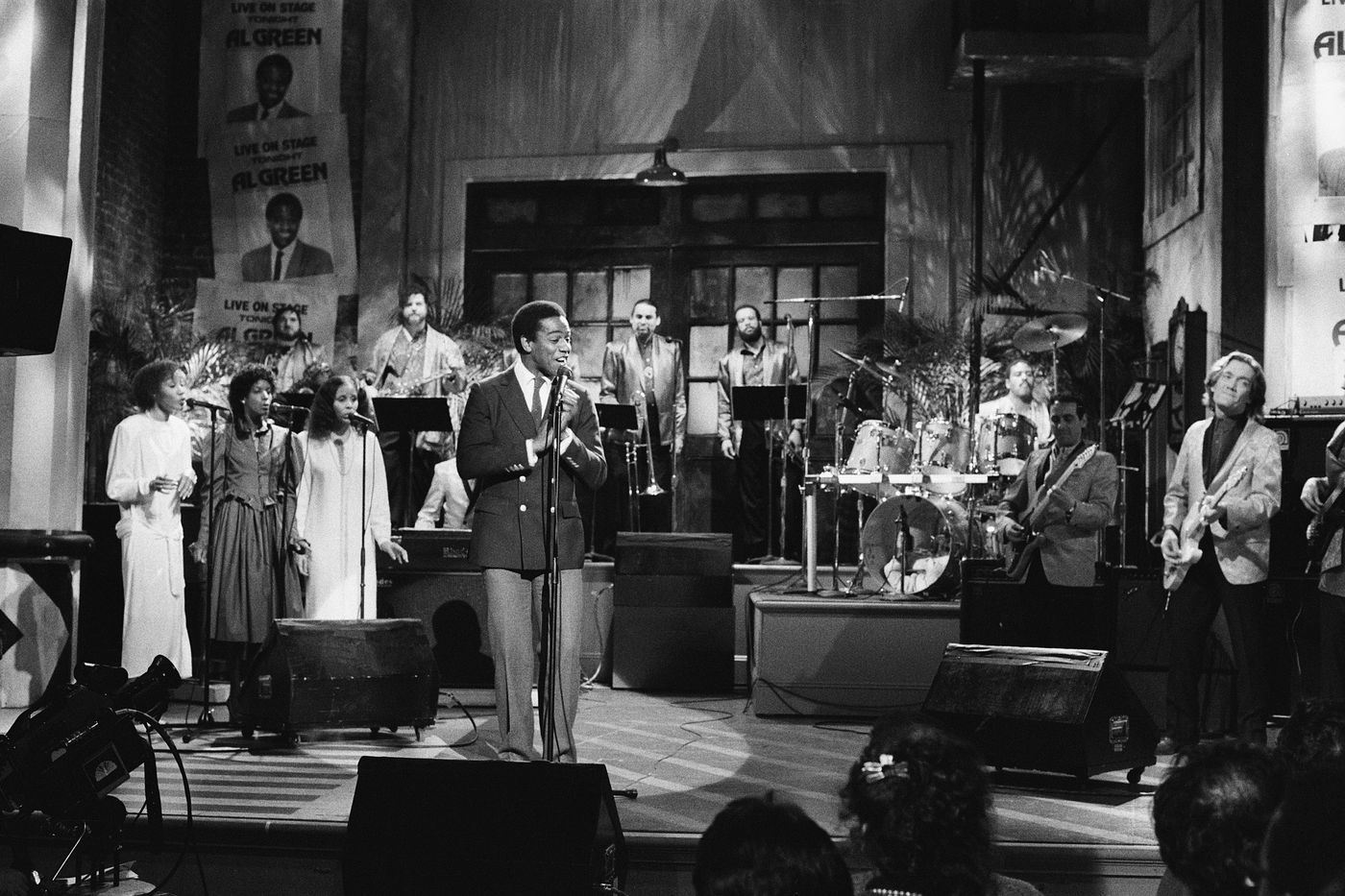
I got to play with so many people on SNL, but twice I got to play with Al Green, and I consider the experience to be a career highlight. I always loved that Memphis sound. The guitar player on most of Al’s records is a man named Teenie Hodges. I studied his parts and played the songs. It was just amazing. Man, it’s the sound of his voice. You know when you’re standing right next to somebody, and it’s different from hearing a recording or hearing it come through a microphone? Not with Al. When you really hear their voice right there in the room, it’s beautiful.
The Saturday Night Live Band, performing with Bryan Ferry (1987)
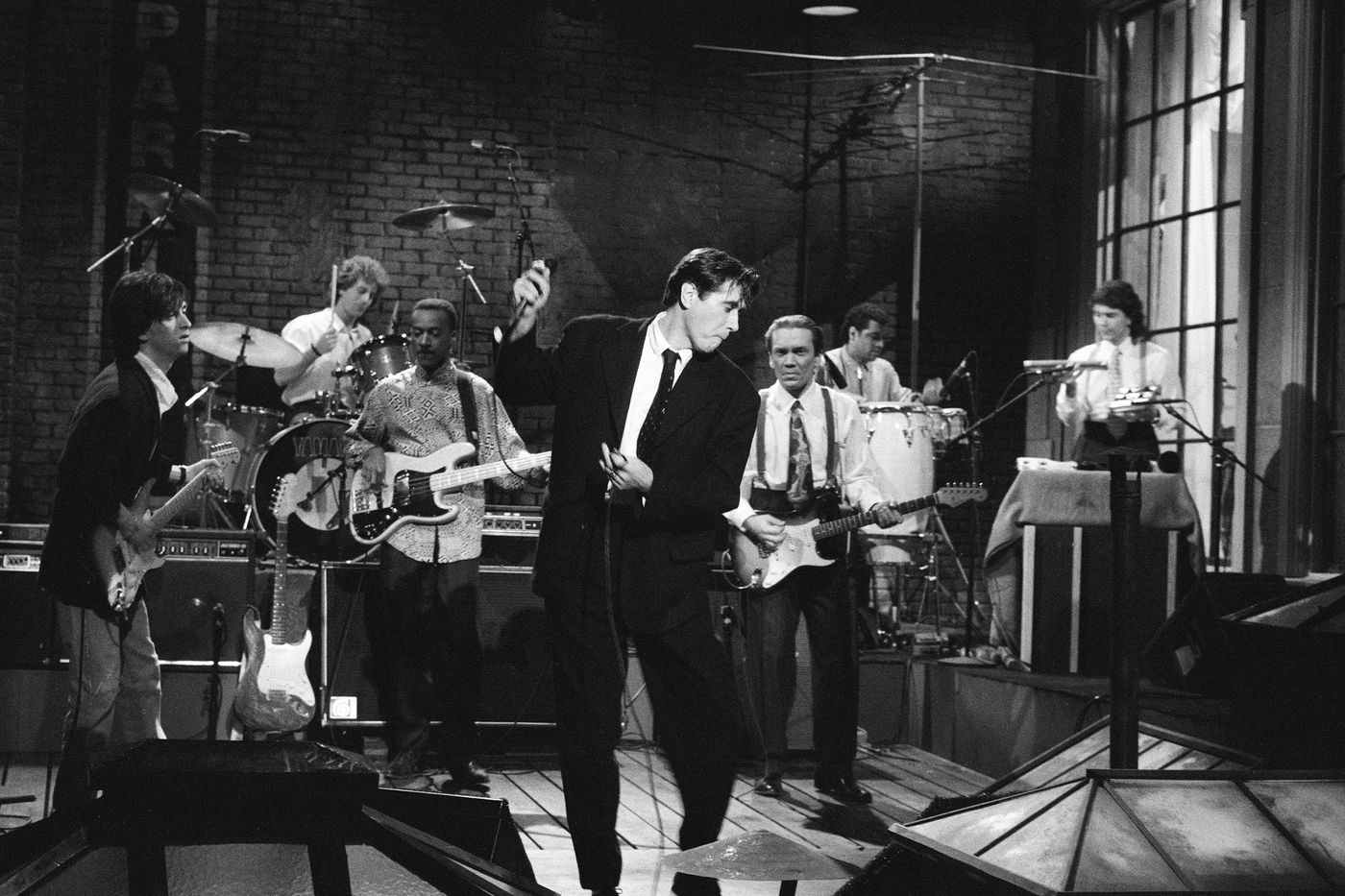
Bryan Ferry was on the show and brought Johnny Marr, the great guitar player from the Smiths. He didn’t bring any other musicians and used the SNL house band, so I got to play with him. There was an incident. The first song he did, “The Right Stuff,” started with a conga-drum intro, so I hired a good percussionist. We rehearsed and did camera blocking the previous day, everything went well at the dress rehearsal, but the minute before we were going to start the song on the live show the percussionist wasn’t there. I’m looking around going, Oh no, what are we going to do? I’m thinking he’s going to show up any second and he’s going to come running in. But he never did. Oh, well, he was busy. So with 30 seconds to go, I’m looking around and I see Steve Jordan, the drummer, standing in the back of the room. I go, “Steve, come here!” He didn’t even get to take his coat off, he had this black leather coat on. I said to Chris Parker, who was our drummer, “Chris, you play the congas because you know that intro from having rehearsed it, and Steve, you play drums.” Steve had never heard the song. The stage manager queued us in at 15 seconds. And we start, Chris playing the congas and Steve kicking in on the drums, and it sounded fantastic.
Bryan Ferry is an enigma. He’s not aloof at all, was very friendly, but kept to himself. He was within himself, except when he performed and then he would put out. We actually went and played with him at another show in Manhattan later that month. When Bryan came out onstage, I got a slight taste of what it had been like to be in the Beatles at the beginning — the screaming-girls thing. Even with Daryl and John, I had never heard the volume of screaming girls as I heard at that Bryan Ferry show. I was surprised. I was like, Wow, okay, I didn’t expect that here.
More From The ‘in session’ Series
Former SNL bandleader G.E. Smith on his best sessions with Mick Jagger, Bryan Ferry, and, of course, Hall & Oates.

